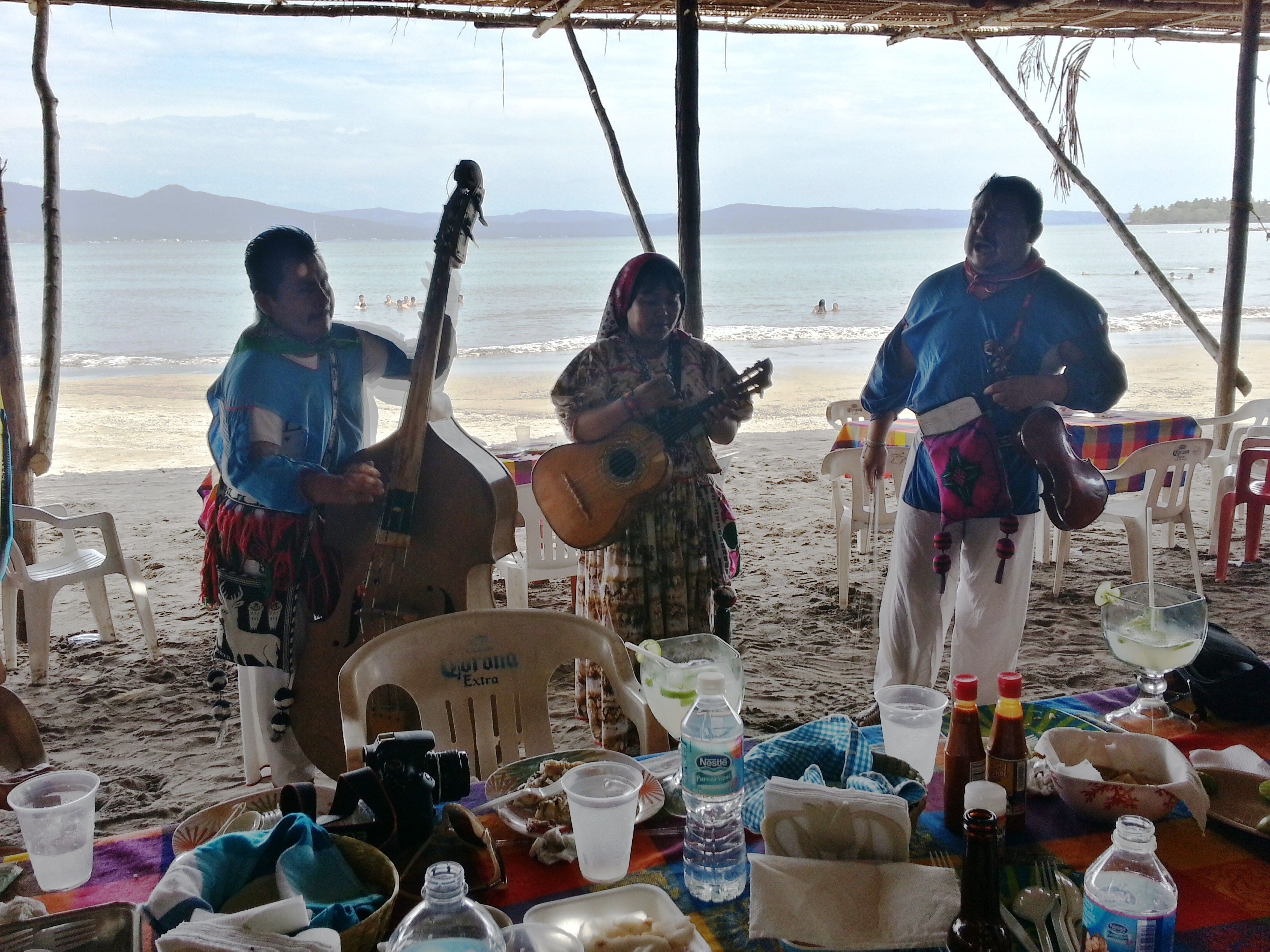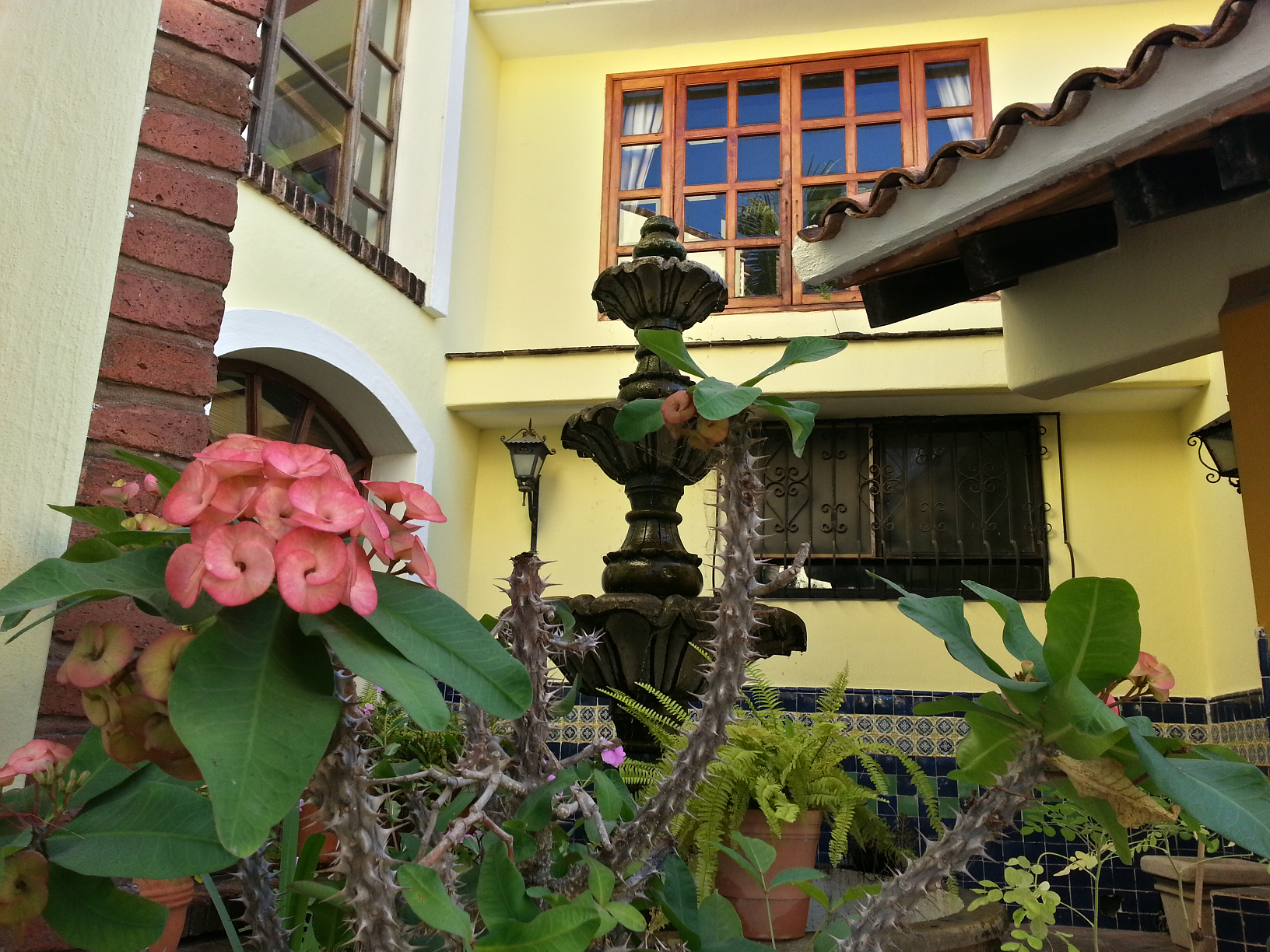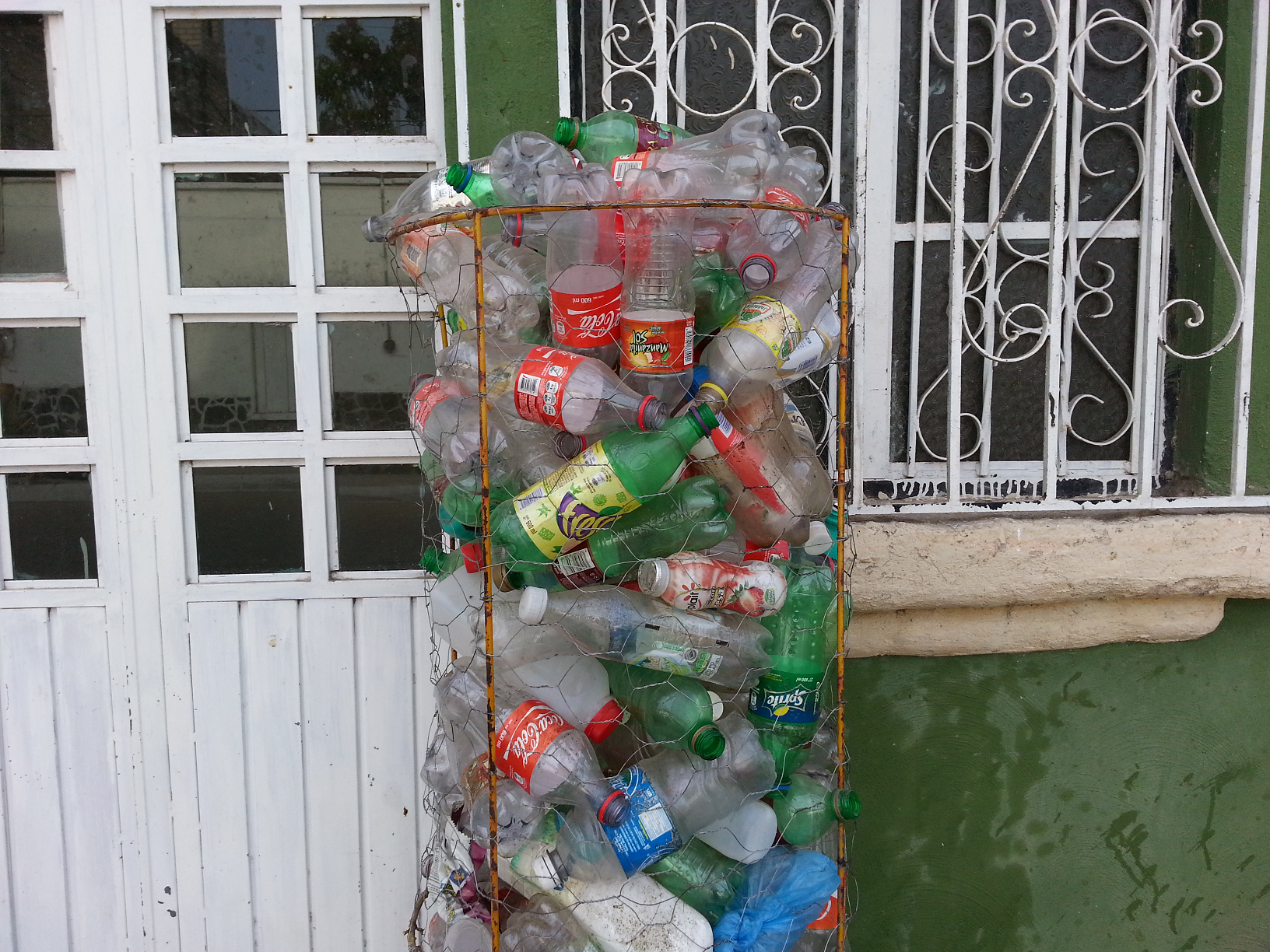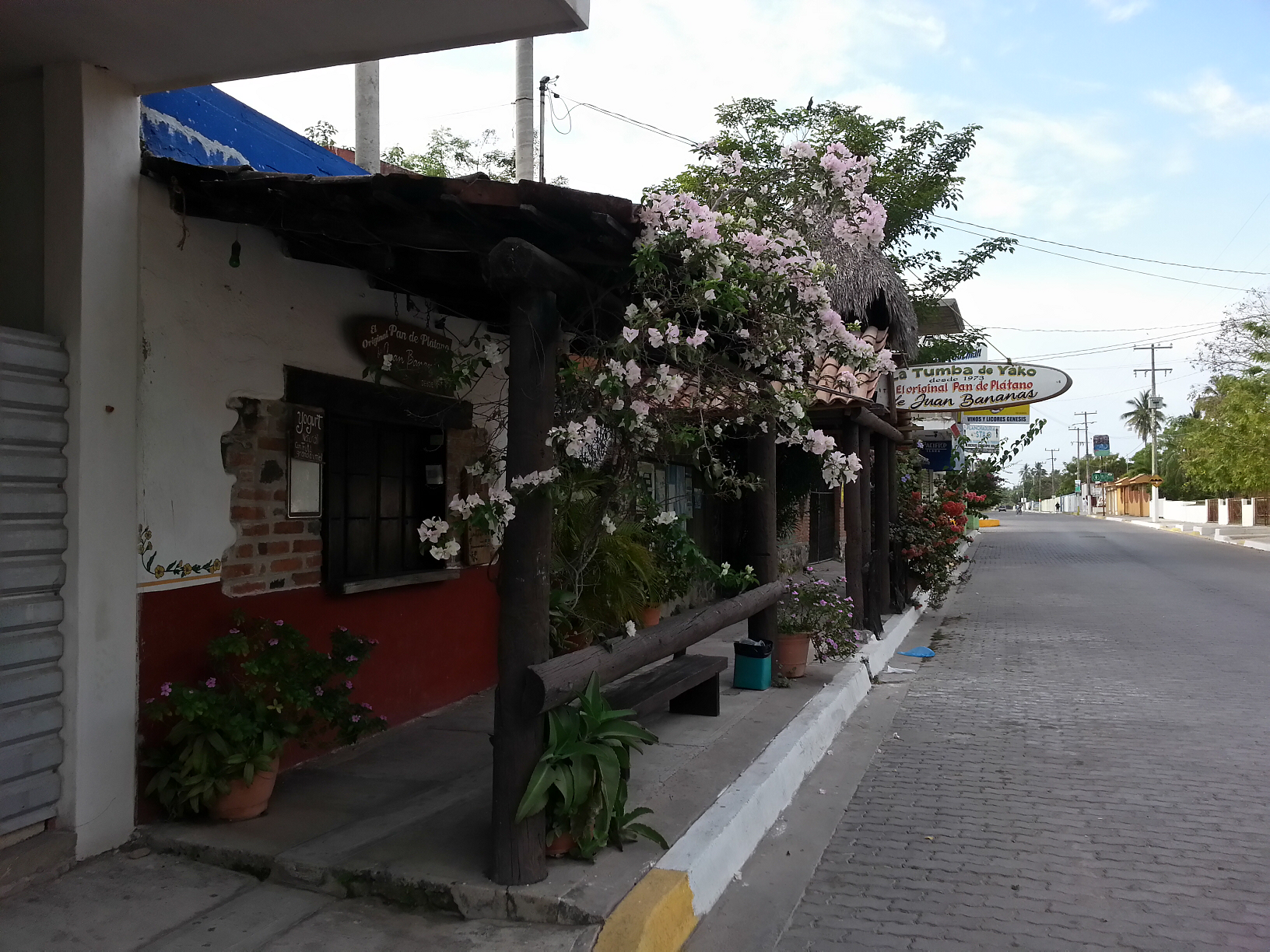For an authentic Mexico eco-adventure along the Riviera Nayarit coast, head to the remote San Blas Peninsula. Go now, while the closest international airport is in Puerto Vallarta, about three hours away. Once the four-lane highway is completed in 2018, it will be harder to find fresh-made tortillas, enormous red snapper, Huichol Indian crafts in the daily market, and lumbering crocodiles in La Tovara National Park.
The Town of San Blas
Families with school-age kids will enjoy the colorful small town of San Blas. During the 17th century, it was a center of Spanish ship-building and the embarkation point for Alaska and California expeditions, including those of Junipero Serra, founder of the famous California Missions. The remains of San Basilio, a Spanish-era fort and lighthouse, guard the small port, now filled with shrimp and fishing boats that attract Mexican families to the excellent seafood dining and beaches.
Be sure to visit the main square where a market springs up after church, while chimes are ringing from the old bell tower inspired the Longfellow poem, “The Bells of San Blas.” Spanish Catholics pay homage to the statue of Our Lady of the Rosary la Marinera or Seafarer. Her image protected every ship that left the harbor and a replica produced by devotees in Spain is displayed in the chapel.
At One with Nature on the San Blas Peninsula
The main activities along the peninsula’s 20 miles of beaches are outdoors and adventure-oriented: surfing and birding. Sayulita (about an hour south) may be better known as “the university of the waves,” but its best surf is in winter and spring. In summer, Playa el Borrego in Matanchen — home to several of Mexico’s surf champions – is the place to be. Several of the small hotels and hostels will arrange for surf lessons.
Both San Blas and the village of Matanchen are gateways to La Tovara National Park, a UNESCO World Biosphere protected for its extraordinarily pristine mangrove estuary and an ecosystem that hosts over 250 species of birds.
Visitors hire a small boat to tour the estuary in hopes of seeing a black-bellied tree duck, great blue heron, and roseate spoonbill on their winter migrations, or the cormorants, egrets, kingbirds, hummingbirds and other species that live there. Crocodiles swim throughout estuary, while iguanas laze along the mangrove branches. If you’re birding novices, be sure to rent “The Big Year” comedy on Netflix and let Jack Black and Owen Wilson teach you about birder competitions so you’re prepped for your adventure.
Exploring the Birds of La Tovara
Our wonderful guide, Francisco Garcia (reach him at [email protected]), is a father of two whose 8-year-old can already identify a dozen birds on her own. He leads hikes, bird walks, fishing trips and other wilderness adventures; his team had actually won Mexico’s “The Great Day” 24-hour birding competition by spotting 274 species (Yes! More than a dozen per hour!)
It was fun enough to relax on a three-hour cruise through miles of mangrove and grasslands, where only birdcalls punctuated the silence. You’ll want to book an English-speaking naturalist like we did to get the most out of it; rates begin at about US$20 per person including boat fees. With Francisco’s help we spotted more than a dozen bird species and several crocodiles, before pulling up at a small crocodile farm where they breed and return them to the wild.
Families who stay for a few days can go to the coffee-growing region of Tecuitata in the hills of the Sierra Madres, where there are canopy views of more than 200 species of forest birds.
Relaxing in Paradise at Matanchen Bay
San Blas is one of those places that grows on you. Our “Great Day” began with a breakfast of fresh chilaquiles and homemade banana bread, followed by a walk for some local sightseeing. At the San Blas town beach, a boat full of costumed Huichol Indians was returning from a traditional ceremony at their sacred white rock island of Mexcaltitan.
Our driver from Tropical Incentives took the group to Las Islitas, another beach along the Bay of Matlanchen where more than two dozen thatch-roof restaurants lined the sand.
Huge thatch palapas shaded parking on one side and beach-facing tables covered in floral oilcloths on the other. Locals, Mexican families from Guadalajara, ex-pats living along the coast, tourists, surfers and vendors selling everything from ice cream to floaties, to beach balls and fresh mango on a stick, roamed the clean sand beach while kids played in the warm, shallow surf. Huge grills for barbecuing fish, open air shower stalls and changing rooms completed the scene.
Our host, Richard Zarkin of the Riviera Nayarit CVB, chose a huge pink pargo fish from the day’s catch and instructed the chef to prepare it with lime and salt. While it cooked over the mangrove wood, we had ceviche of mahi mahi, fresh salsa with totopes (fried whole tortilla chips), Pacifico beers, followed by baked maduro plantains drizzled with sweetened condensed milk.
When the heat of the day had passed, we drove to La Tovara. Francisco explained that birding was best done in the early morning or closer to sunset, when the birds are more actively feeding.
Getting to Know San Blas Like the Locals
Take a look!
Our base was the clean and simple Hotel Garza Canela (52 323 2850112) at Paredes No. 106 Sur, C.P. 63740 San Blas, Nayarit, Mexico. It is named for one of the hundreds of bird species found in this area. Garza Canela has the feel of an old convent with stone columns in the very large rooms, but in fact was rebuilt after a 2002 hurricane that swept across Cape San Blas. The lush gardens, reflecting the care of the matriarch who nourished her fruit trees and flowers back to full bloom, are very welcoming.
That the hotel is still run by the Vasquez Gonzalez family adds to the home from home feel. Within the gardens are the owners’ residences, an old family chapel, small swimming pool, toddler playground and a gift shop with sophisticated Mexican clothing, crafts and jewelry.
El Delfin at Hotel Garza Canela
The big attraction for Mexican tourists (and for savvy foodies) is el Delfin, made famous by Chef Betty, a judge on Mexico’s top cooking show. She is one is one of the four sisters who keep this family hotel running along with their mother.
We had fresh breakfasts of fruit harvested from the hotel garden, and locally baked breads and homemade jams. Our wonderful dinner included fish ceviche cured in lime with jalapeno and onions, followed by a grilled filet of mahi mahi served over yellow rice topped with a rich, creamy Pipian sauce made of peanuts and sesame seeds.
Planning Your Escape to San Blas
Each year in late January, San Blas hosts the Festival of Migratory Birds. Our guide compared the region to Veracruz in terms of its bio-diversity and, in our brief cruise, we saw large turtles, heron, egrets, crocodiles (the species crocodrilo agoutis inhabits this brackish water. )
Sport fishing for marlin, sailfish and dorado (mahi-mahi) is very popular, and the hotel staff can help you arrange a day of deep sea fishing, whale watching or even a camping overnight on Isabel Island with Team Pipilas, a local tour operator.
In addition to surfing and birding, active families can go horseback riding in the nearby Sierra Madres and explore more of the region’s small fishing villages. For more information, please visit the tourism information websites of sanblasrivieranayarit.com, sanblasmexico.com, riveranayarit.com. And be sure to post which birds you saw in the Comments field below.
Dear Reader: This page may contain affiliate links which may earn a commission if you click through and make a purchase. Our independent journalism is not influenced by any advertiser or commercial initiative unless it is clearly marked as sponsored content. As travel products change, please be sure to reconfirm all details and stay up to date with current events to ensure a safe and successful trip.



